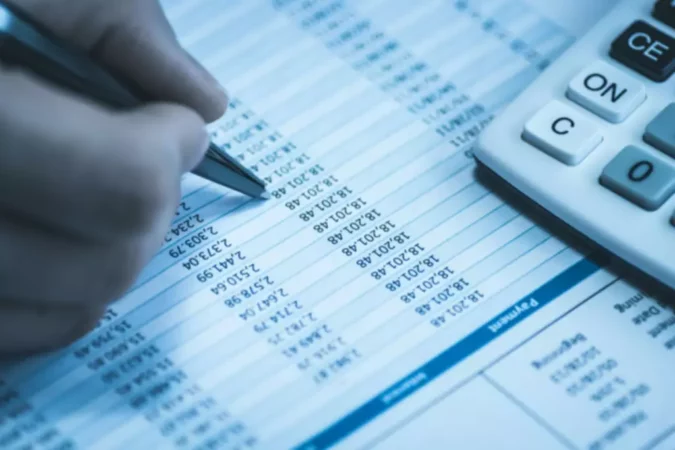Financial Statements
The main task of bookkeeping is to provide useful and accurate financial information for its users through accounting reports. Accounting data is of interest to a wide range of individuals and entities associated with the financial activities of the organization. Users of reporting information can be either internal or external.
- Internal usersInternal users would be heads of the organization, management, specialists, employees who have access to financial statements and information. They use it for control, planning, and management, and many other decisions made within the company.
- External usersThe list of these users is much longer, they can be further subdivided into users who have a direct interest in how the business is doing and an indirect interest in it. Users with an indirect interest in the performance of the company are tax authorities, audit and consulting firms, stock exchanges, appraisers, government bodies, information organizations, trade unions, etc.
Users who are directly interested in the activities of the organization are shareholders who constantly monitor the profitability of the organization, changes in equity capital, seeking a benefit in the form of dividends, and an increase in the market value of shares. Investors study the financial statements from the standpoint of the profitability of investing their own funds in the activities of the business. Lenders assess the organization’s solvency, its reliability as a client. Business partners assess the financial position of the business for continued cooperation and so on.
Each financial report performs its specific function, but together they create a system of indicators formed based on the concept of preserving (maintaining) and increasing financial capital. The main portion of useful accounting information is compiled in the Balance sheet.
The Balance sheet is the main form of reporting and serves, as already mentioned, the main source of information for a wide range of users. At the same time, this report performs not only an economic function but also a legal function. The balance sheet report consists of several categories, which we are going to discuss in more detail as we show how to make the Balance sheet.
How to Make the Balance Sheet
A Balance sheet is a financial document that gives an idea about the current financial position of the organization. It is called a Balance sheet because it represents equality – the sources of funds any business has equal the uses of these funds for buying resources for the business.
Header
The header starts with the title of the financial document – Balance Sheet, followed by the name of the organization for which the report is prepared. Finally, since this document can be thought of as a snapshot of the financial condition on a particular date, the document will be prepared as of a particular date and not a period. After all, the next day, any item on this report might be different.
Assets
The first section, which is often presented in the left side column of the report, covers the assets of the business. An asset can include all the property of an enterprise, which has value. Examples of such assets include computers, furniture, vehicles, machinery, buildings that are owned by the company. Also, this section includes the amounts owed by other legal entities. In other words, an asset is any item that is at the disposal of the enterprise. This section is further divided into two more subsections.
- CurrentThe first section of assets is current assets, which represent the amount of funds and other items that are used by the company for a short period and are constantly in need of replenishment – these are raw materials, inventory, cash, prepaid expenses, and so no.
- Noncurrent (fixed)This group includes the items that the company uses for a long time to carry out entrepreneurial activities. These are buildings, patents, equipment, and so on.
All the items are listed in the order that the company can most easily turn them into actual physical cash.
Liabilities
A liability is anything that has value, but in this case, the company owes it to other parties. Just like the assets, the liabilities are listed as either short or long-term items. Accounts payable, accrued liabilities (interest payable, salaries payable, etc.), customer advances. They are ordered before long-term liabilities.
When it comes to long-term liabilities, you would see items such as bank and notes payable, deferred tax liabilities, and other obligations that will not be fulfilled any time soon. Just like the assets, they are listed in the order that they should be paid.
Owner’s Equity
The equity section then shows the shareholder’s equity, which is actually the difference between the above two categories. This is the value of all the assets left over to the owners after covering all the obligations. The most important line in this section is shareholder’s equity.
While companies have minor differences in formatting and labeling, this overall structure is standard across companies. The asset section comes first, followed by liabilities, and equity comes last. At the end of the document, the company can add notes. For instance, it can describe its commitments and contingencies. The first one refers to the obligations of the company to perform something in the future (e.g. buy a large batch of raw materials). Contingencies are possible obligations that can take place based on uncertain future events (an ongoing lawsuit).
How to Analyze the Balance Sheet
This report performs not only an information function and clearly shows data about the company’s assets and other items, but also an analytical one. Let’s look at the main indicators that you need to pay attention to for correct report analysis.
The Balance sheet values should be viewed in dynamics. If the Balance sheet values have decreased in comparison with the amounts in the report for the previous reporting period, this demonstrates a decrease in the assets and liabilities of the enterprise, which may mean a decrease in business activity, depreciation, and loss of assets. If the Balance sheet values have increased, this demonstrates an increase in the assets and liabilities of the business, but it is necessary to make an additional analysis of each item that has changed significantly.
Some of the items on the Balance Sheet that should be paid special attention to when looking at this report are listed below.
- Cash. It demonstrates how the obligations are covered with money. The more cash or equivalent asset are available, the more liquid the business is considered to be. However, if the amount is constantly increasing and significantly exceeds the debt to counterparties, then this means that funds are used inefficiently.
- Debt. If the debt of customers increases, but the debt to suppliers remains at the same level, this means that a business is not effectively managing debt and you have to pay attention to this aspect.
- Equity. Equity capital is used to cover business liabilities and accumulated retained earnings. Comparing this indicator with the amount of debt to counterparties will determine the amount of profit that can be distributed without losing the financial stability of the company.
- Fixed assets. It contains information about the value of business assets and the level of their depreciation. The total initial (book) value for this category shows the total amount of investments in long-term assets. The ratio of the original (book) value to depreciation allows you to estimate how worn out the equipment is and what its real (market) price is as of the Balance sheet date. With a business that is growing, the value of fixed assets should increase, but if you see negative dynamics, you should pay attention to the depreciation and think about additional investments in these assets.
The process of drawing up this financial statement allows you to identify the elements of accounting that are overlooked. When the report has already been created, you will not only be able to use the data to analyze the dynamics of changes in values, but also make effective management decisions based on the values and ratios that can be received from the report.


















